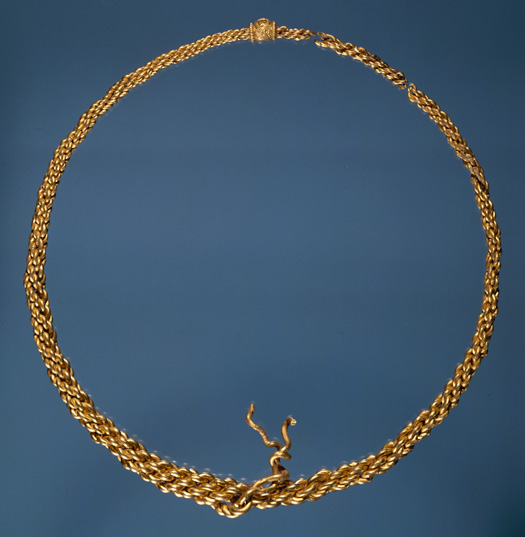Who was the magnate at the Tissø residence?
The aristocratic architecture and the many finds of exclusive jewellery and high-quality weaponry show that prosperous men and women lived at the Tissø site for almost 500 years. There is no doubt that these people belonged to the absolute elite of the time – perhaps they were even part of the royal dynasty? At Old Lejre on Zealand and at Järrestad in Scania, magnates’ residences have been excavated which in many respects greatly resemble Tissø. One possible interpretation is that Tissø may well have been a royal residence, but the royal dynasty had its permanent residence and buried its dead at Old Lejre. At suitable intervals the king would travel around the country to his royal residences. From these he could control his kingdom, settle disputes, levy dues and carry out his cultic duties. Mobile or travelling monarchies are also known from the Continent in the years from c. 550 to 1000 AD, for example among the Merovingians and later the Carolingians and Ottonians. The combination of royal residence, cult site and market can be seen for example at Charlemagne’s palatine complex in Aachen/Aix-la-Chapelle. When the Emperor visited the palace with his whole court, a market was held with crowds of traders and craftsmen. It is precisely this kind of flourishing of activity that can also be demonstrated at Tissø.

